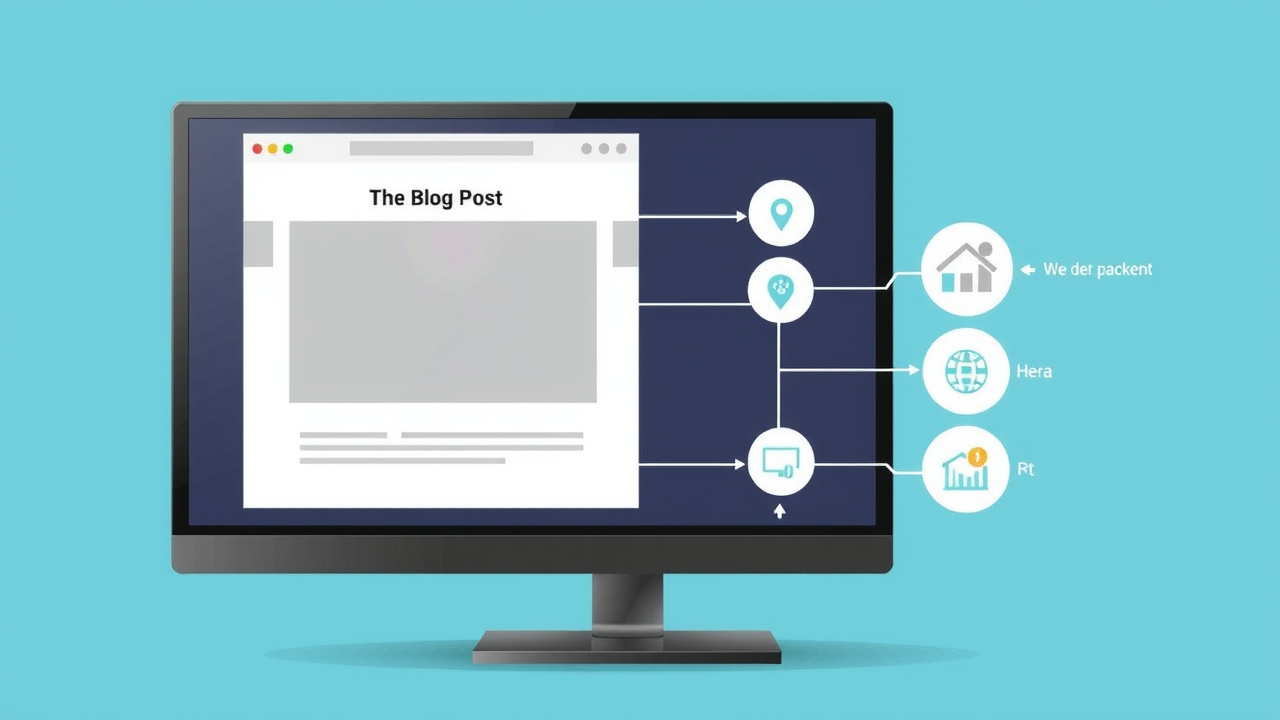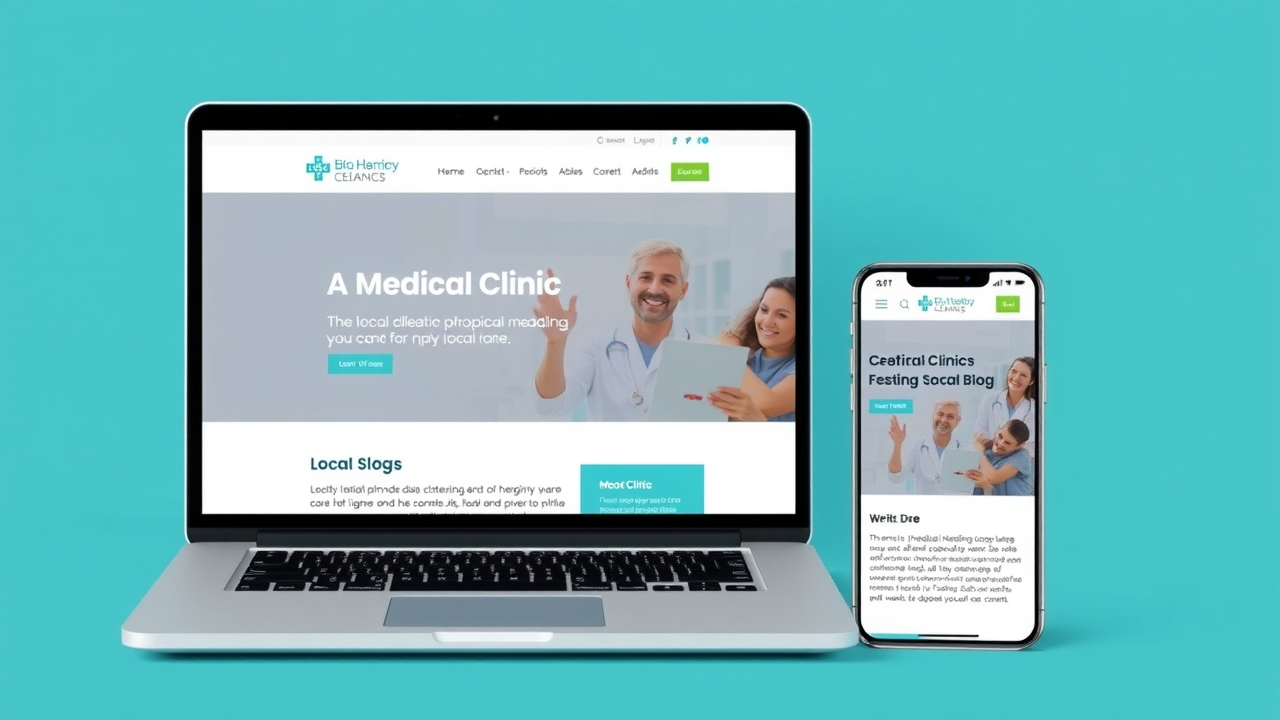
Did you know? Nearly 78% of local mobile searches result in an offline purchase within 24 hours. That means every time someone searches for a medical service in your area, your blog post could be the deciding factor in gaining a new patient. In today’s competitive healthcare landscape, learning how to optimize medical blog posts for local search isn’t just smart—it’s essential. This guide reveals the simple yet powerful steps you can follow to stand out in local search results and help your medical practice welcome more patients from your community.
Unlocking Local Search: Why Optimizing Medical Blog Posts for Local SEO Matters More Than Ever
When patients in your community are looking for healthcare services, they often turn to local search on Google. By ensuring your blog posts are fully optimized for local SEO, your clinic or practice can appear in those critical moments and attract more potential patients. A well-optimized blog is not just a tool for sharing medical knowledge—it is also your ticket to building a thriving medical practice in your neighborhood. In an era where search engines rank relevance and local proximity, successful healthcare providers must tailor their content to specific locations and patient needs.
Optimizing medical blog posts for local search means you go beyond general topics. You focus on local keywords, topics relevant to your region, and user intent—connecting directly with people nearby. Examples of this might include titling a post “Pediatric Care in Austin: What Parents Need to Know” or answering frequent local health concerns. This approach helps your content score higher in local search results, turning online readers into real-world patients for your healthcare provider business.
As you refine your local SEO approach, it’s also valuable to consider how your social media presence can amplify your blog’s reach and engagement within your community. Integrating a thoughtful social media strategy for healthcare practices can further boost your visibility and help you connect with local patients where they spend their time online.
A Surprising Truth: 78% of Local Mobile Searches Lead to Offline Purchases Within 24 Hours
It’s an astonishing number: 78% of local mobile searches result in an offline action, such as an appointment or a visit to a clinic, within just one day. For medical practices, this is more than a statistic—it’s a wake-up call. If your content isn’t designed to optimize medical blog posts for local search, you risk missing out on patients who are ready to make quick healthcare decisions. This underscores the importance of a targeted SEO strategy that includes locally relevant blog posts, accurate contact information (like your phone number and address), and compelling calls to action.
By tapping into this fast-moving user behavior and making your medical practice highly visible in search results, you build trust and convenience. Patients searching for urgent care, specialty clinics, or annual check-ups often need immediate information. Serving their needs through optimized local content increases the odds that your practice becomes their preferred choice, especially when they’re ready to book an appointment.
The Growing Importance of Local SEO for Healthcare Providers and Care Providers
For today’s healthcare providers and care providers, local SEO is the key to unlocking new patient opportunities. The rise of mobile devices and voice assistants means more people are finding medical services through localized searches like “best urgent care near me” or “family physician in [Your City].” Without a thoughtful local SEO approach, your medical practice may get lost among national chains or larger hospitals with bigger advertising budgets.
Local SEO enables you to optimize medical blog posts for local search so search engines, like Google, associate your brand with the area you serve. This increases your chances of appearing in the “Local Pack,” knowledge panels, and map listings. For small and mid-sized practices, a strategic focus on local content can help level the playing field, driving real results and helping build your online presence.

The Anatomy of an Effective Local SEO-ready Medical Blog Post for Local Search
A high-impact blog post isn’t just about sharing medical expertise. Every element should work together to optimize medical blog posts for local search and boost your clinic’s local SEO presence. This means combining specific strategies—smart keyword research, thoughtful structure, and a hyper-local focus—to connect with patients right where they are.
Start by researching what locals are searching for related to medical services in your area. Then, craft each post with a clear introduction, relevant subheadings, and actionable information. Layer in local keywords throughout your content, meta tags, and images to strengthen your relevance. Make it easy for both search engines and potential patients to find your blog and understand what makes your practice unique.
Structuring Your Medical Practice Blog for Google Search Visibility
Structure is important for standing out in Google search. Break your blog posts into sections using clear, descriptive headings (H2, H3, H4). Each section should answer a specific question or address a local pain point. For example, you might structure a post about “Seasonal Allergies in Orlando” with headings like “Common Triggers in Central Florida” or “When to See a Local Allergist.” This organization not only delights readers but signals to search engines exactly what your article covers, improving your chances of ranking locally.
Include internal links to other relevant posts on your site, add your clinic’s contact information, and make use of engaging lists or tables. These features help both users and search engines navigate your content efficiently, driving your authority as a trusted local healthcare provider.
Incorporating Local Keywords and Local Keyword Research: Best Practices
The heart of a successful local SEO strategy is local keyword research. Start by discovering what potential patients are actually searching in your area—these may include phrases like “urgent care in [City]” or “pediatrician near [Landmark].” Use free and paid tools like Google Keyword Planner, SEMrush, or Moz to identify high-traffic, low-competition keywords tailored to your specialty and location.
Strategically insert these local keywords in your blog post’s title, headings, and naturally throughout the body text. However, avoid keyword stuffing; your goal is to make content informative and easy to read for real people. Think of each blog as a bridge between your medical practice and community members actively seeking services like yours.
Utilizing Local Search Intent: Writing Content that Attracts Your Community
Matching your content to local search intent is essential for success. Instead of writing generic posts like “How to Treat a Sprain,” try “How to Treat a Sprain in [Your City]: Local Resources and When to Seek Care.” Address common questions and local health concerns. Highlight neighborhood-specific statistics, clinics, events, or even testimonials from local patients.
Always write in a friendly, conversational tone—the kind that feels like you’re chatting with a neighbor. When readers see that your practice understands local needs, concerns, and culture, they’ll be more likely to trust your recommendations and take the next step, whether that’s booking an appointment or sharing your blog post with others in the area.

Step-by-Step Guide: How to Optimize Medical Blog Posts for Local Search
To truly optimize medical blog posts for local search, follow a clear, actionable process from brainstorming to publishing. Here are essential steps and tips every healthcare provider or medical practice should implement for greater visibility in local search results.
Executing these steps may seem intimidating, but even small improvements in each area can add up to big gains. Consistency and patient-focused content remain your biggest advantages, especially for care providers looking to build a solid online presence.
Conducting Local Keyword Research for Medical Services
Every local SEO campaign begins with robust keyword research. Start by listing the core medical services you provide and then add specific locations, neighborhoods, or landmarks nearby. Use Google’s autocomplete suggestions to brainstorm what people are searching for; type in “dermatologist in…” or “best doctor near…” and note frequent options.
Dive deep into competitors’ content and Google Business Profiles to see what terms they rank for. Supplement this with keyword tools that provide search volume and competition statistics. Once you have your local keyword list, prioritize those with good traffic potential and geographic specificity—these are goldmines for driving local traffic to your blog.
Integrating Local Keywords Naturally into Headings (H1, H2, H3) and Content
Placement of local keywords is just as important as selection. Always include a target local keyword in your blog post’s title (H1) and main section headings (H2, H3). Then, sprinkle keywords naturally within the introduction, body text, meta descriptions, and image ALT tags.
Remember, write for humans first—if it feels forced, find a better way to blend the location and service. For instance, instead of: “Our New York City Family Medicine Services,” try a sentence like: “If you’re searching for reliable family medicine in New York City, our team is ready to help.” This technique keeps the search engine happy without sacrificing the reader’s experience.
Optimizing Images and ALT Tags for Local SEO and Local Search
Images do more than break up text—they support your local SEO when tagged appropriately. Always use high-quality photos of your practice, team, events, or building. For every image, write descriptive, location-specific ALT tags like “pediatrician in Dallas examining a young patient” or “modern Chicago urgent care clinic.”
These signals help search engines understand both context and relevance, potentially surfacing your pages in Google’s image search for local queries. They also improve accessibility for readers using screen readers—a bonus for both SEO and user experience in healthcare blogging.

Google Business Profile and Online Presence: Leveraging Every Asset for Local SEO
A robust Google Business Profile (formerly Google My Business) is perhaps your most powerful local SEO tool. It acts as your virtual storefront, influencing how your medical practice appears in local packs, maps, and knowledge panels. Regularly update your profile with accurate information—address, phone number, hours, and service details—plus engaging photos and patient reviews.
Today, your online presence extends far beyond just your website. Make sure details are consistent across all directories and platforms. This comprehensive approach builds your clinic’s trust and ranking in local search results, so patients always find up-to-date, helpful content wherever they look.
How Your Google Business Profile Boosts Your Medical Practice’s Search Rankings
Your Google Business Profile is the cornerstone of your local online presence. Google prioritizes complete profiles with plenty of reviews, fresh photos, and accurate info. When your business profile is fully optimized, you increase your chances of appearing in search results and Google Maps when potential patients search nearby.
Request patients to leave reviews after positive experiences to build social proof. Respond to feedback and showcase your medical team and facility with quality, locally relevant photos. These strategies signal credibility to both search engines and patients, directly supporting your SEO strategy and driving more appointments.
Consistency Across Search Engine Listings and Your Website
Consistency is king when it comes to local SEO. Ensure that every online listing—be it on Google, Bing, Yelp, or Healthgrades—uses the same business name, address, and phone number (NAP) as your website. Inconsistencies can confuse search engines, leading to lost ranking opportunities.
Lock in your credibility by regularly auditing your citations and making updates as your practice grows or changes. This consistency helps build trust, boosts your reputation, and keeps your healthcare provider or care provider brand top of mind for local searches.

Local SEO Content Types: What Works Best for Healthcare Providers and Medical Practice Blogs
Not all blog content drives the same results. Focus on creating types of posts that connect with your local community, answer pressing health questions, and showcase your practice’s expertise and personality. By leveraging the power of location-specific topics, you give both new and current patients reasons to stay engaged and return for more insights.
Diversified content—such as news articles, patient stories, local event recaps, and “best of” healthcare lists—keeps your blog fresh and relevant, helping your medical practice establish authority in both search results and your area.
Common Local Search Blog Topics for Care Providers
Local health alerts: e.g., “What to Know About Allergy Season in Phoenix”
Clinic updates: “New Services at Our Springfield Office”
FAQ posts: “Answers to the Top Health Questions from [Region] Patients”
Staff spotlights: Highlight team members with ties to the area
Health resources: Lists of local emergency numbers, clinics, or pharmacies
These topics address the needs of your specific audience and naturally incorporate local keywords relevant to your medical practice . They also foster engagement and trust within your target community.
News, Announcements, and Community Events: Enhancing Local Relevance
Sharing news about your practice, announcing new services, or posting about local health fairs and blood drives positions your brand as an active, caring part of the community. These updates aren’t just informative; they are perfect vehicles for local keywords and timely content that Google loves to index.
Encourage patients to leave testimonials about their experience at your events or new offerings. Capture highlights with locally tagged photos. This blend of real-life visibility and digital optimization strengthens your local relevance and draws more eyes (and feet) to your door.

Essential On-Page Elements to Optimize Medical Blog Posts for Local Search
Effective on-page SEO makes blog content easier to find and more trustworthy. Every detail counts when you want your posts to climb local SERPs (search engine results pages). Start by crafting enticing meta titles, descriptions, and URLs that include location and targeted keywords, so search engines immediately know where and what your post covers.
Go further by linking internally to your key service pages or previous blog posts. This not only keeps readers engaged but also signals relevance to search engines, helping distribute SEO strength across your site.
Crafting Meta Titles, Descriptions, and URLs Rich in Local Keywords
A winning meta title might look like “Family Physician in Seattle – Your Neighborhood Clinic’s Health Advice.” Meta descriptions should preview your post’s value: “Looking for healthcare tips from a trusted Seattle provider? Learn from our local experts how to stay healthy all year.” Keep URLs simple and keyword-rich, such as www.yourclinic.com/blog/flu-shot-seattle.
These signals tell Google your content is hyper-relevant to local users and can push your pages ahead of larger, generalized health sites in the rankings.
Internal Linking Strategies to Drive Authority and Improve Local SEO Signals
Internal linking is the art of connecting one post to another within your website. For example, a post about “Spring Allergies” can link to a separate guide on “Over-the-Counter Allergy Medications at Our Clinic.” This creates a web of relevance, making it easy for readers to find more information and for search engines to understand your site’s structure.
Be sure to specify the anchor text with relevant local phrases, like “learn more about pediatricians in Raleigh,” rather than generic words like “click here.” Strategic internal linking grows your site’s authority, improves engagement, and strengthens your local SEO profile across all blog posts.

Boosting Authority: Social Media, Online Reviews, and Local Business Signal Enhancement
Local SEO isn’t limited to your blog or website. Key trust signals—like social sharing, patient reviews, and recognition from other local businesses—actively improve your visibility and authority. When these efforts work together, your medical practice stands out as a go-to healthcare provider and a pillar of the community.
Share your most useful local blog posts on social platforms and encourage loyal patients to spread the word. The more engagement your practice receives, the more search engines take notice, strengthening your position in local search results.
Integrating Social Media with Medical Practice Blogging
Promote each new blog post through social media—Facebook, Instagram, LinkedIn, or even local community forums. Use location tags, community hashtags, and targeted posts that shout out partnerships or events. This not only broadens your reach but also contributes valuable signals to Google that your content is relevant, reputable, and regionally significant.
Successful practices consistently remind followers about services, share patient education tips, and build relationships that translate into both online and offline referrals. Remember, a share or like from a local audience carries more weight for local SEO than national exposure alone.
Encouraging Patient Reviews and Leveraging Testimonials for Local Searches
Nothing amplifies your local SEO quite like an authentic patient review. After a positive appointment or outcome, invite patients to leave a Google review describing their experience and mentioning your area or service. Display the best testimonials on your website and blog posts—this demonstrates both expertise and community trust.
More reviews also mean higher placement in local search results . Always respond to feedback, address concerns professionally, and thank reviewers with personalized notes to foster ongoing loyalty and enhance your online reputation.
Collaborating with Other Local Businesses for Powerful Local SEO Backlinks
Partnering with nearby physicians, wellness centers, or neighborhood organizations can earn your practice valuable local backlinks. Co-host events, participate in health fairs, or guest-post on each other’s blogs. These collaborations signal to search engines that your practice is an integral part of the local ecosystem, boosting authority and local relevance.
Try creating joint resource guides with fellow care providers or running spotlight features that celebrate your partners’ expertise. This networked approach benefits everyone—patients get more complete care options, and your collective rank in local searches gets a needed lift.

Harnessing Google Search Console and Analytics to Track Local Search Success
What gets measured gets improved. Google Search Console and Analytics provide free, powerful data to monitor how your posts perform in local search. Review impressions, click-through rates, and user location data to tweak your SEO strategy and ensure continued growth for your blog and your practice.
Use these tools to assess which keyword variations perform best, which posts get the most engagement, and where most of your visitors are located. This insight allows you to double down on what’s resonating with potential patients and reshuffle what isn’t.
Measuring Local SEO Metrics for Healthcare Providers
Focus on the numbers that matter: local keyword rankings, map pack visibility, click rates from local searches, and calls or booking requests coming from your website. Regularly check the number of impressions your clinic receives for location-specific queries and track how far patients travel to reach you after reading your blog.
If a post about “flu shots near [Neighborhood]” leads to new appointments, that’s a win for your local SEO and a sign to replicate that formula across different services and seasons.
Analyzing Search Console Insights to Refine Your SEO Strategy
Google Search Console offers detailed insights into specific local search terms driving traffic to your site. Look for unexpected keyword variations your patients use—sometimes the best opportunities aren’t the ones you planned for. Continually test new approaches, update older posts with fresh data or reviews, and track improvements in local rankings after each tweak.

Expert Tips and Advanced Tactics for Optimizing Medical Blog Posts for Local Search
Take your local SEO program to the next level with these pro tips: Implement medical schema markup for service areas, staff credentials, and office hours to give search engines extra context. Develop FAQs addressing specific neighborhood concerns or local insurance plans. Regularly refresh posts with new case studies, up-to-date health regulations, and photos from seasonal events.
Remember, search engines love fresh, relevant, and hyperlocal information. Keep monitoring for new keywords, Google Maps updates, and changing local health needs so your blog stays at the forefront of local search results and patient trust.
Maximizing Local Traffic and Conversions for Healthcare Providers
To turn blog readers into actual patients, include clear calls to action (“Book an appointment at our Plano office today!”). Make sure your contact information is always visible. Use dedicated landing pages for different neighborhoods or services, internally linked from your blog. Track which strategies drive appointment requests and referrals, and adjust your content plan accordingly.
Mailing lists for local updates or educational workshops can also keep your practice top-of-mind for families or individuals considering switching providers.
Future-Proofing Your Local SEO Strategy for Medical Practice Growth
As Google’s algorithms evolve, continually revisit your approach. Encourage team members to participate in community outreach, keep your Google Business Profile robust and current, and train staff to collect and share local success stories. Leverage new features (like Google Posts or health check reminders) and stay active in reviewing analytics for shifting search patterns and neighborhood trends.

Final Thoughts on How to Optimize Medical Blog Posts for Local Search
Optimizing your medical blog posts for local search isn’t just about adding city names or zip codes—it’s about making your content truly relevant to the community you serve. By incorporating specific local keywords, referencing nearby landmarks, and addressing local health concerns or events, you increase the chances of your content appearing in front of the right audience. This not only helps drive more organic traffic but also positions your practice as a trusted, accessible healthcare provider in your area.

Frequently Asked Questions on How to Optimize Medical Blog Posts for Local Search
1. What Role Does Google Business Profile Play in Local SEO for Medical Practices?
Google Business Profile gives your practice a powerful presence in local searches. It provides essential information like your address, hours, and reviews, boosting your credibility and increasing the chances that new patients find and choose you over competitors.
2. What are the common mistakes medical practices make in local SEO?
Common mistakes include inconsistent business information across directories, neglecting to add local keywords, missing or outdated Google Business Profile details, and failing to gather patient reviews. Avoid these by regularly auditing and updating your online presence.
3. How can healthcare providers stand out in local search results?
Offer unique local content, collect and highlight patient stories, participate in community events, and build relationships with nearby businesses. These efforts make your practice more locally relevant and trusted, both online and off.
4. Should each blog post target a unique local keyword?
Yes, where possible. Targeting unique keywords for each post allows your site to cover more search topics and patient questions. This expands your site’s reach in local searches and avoids competing with your own pages.
5. How Do I Choose the Best Local Keywords for My Medical Practice?

Transform Your Blog Into a Local SEO Powerhouse
Creating a well-structured blog post is just the beginning. When optimized for local search, your blog becomes a vital tool for attracting nearby patients, enhancing your practice’s visibility, and positioning you as a trusted authority in your community. From keyword-rich headlines to patient-focused insights, every element of your post can play a role in driving growth and deepening engagement.
Want to take your content even further? Discover how to turn your blog strategy into a full suite of impactful marketing assets. From repurposing content to creating more patient touchpoints, there are countless ways to maximize your reach and boost engagement. Learn more about our content marketing services here .
 Add Row
Add Row  Add
Add 




Write A Comment